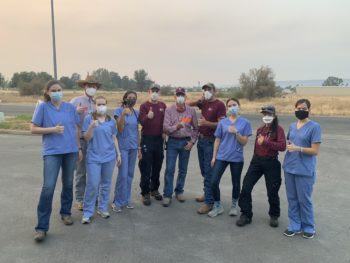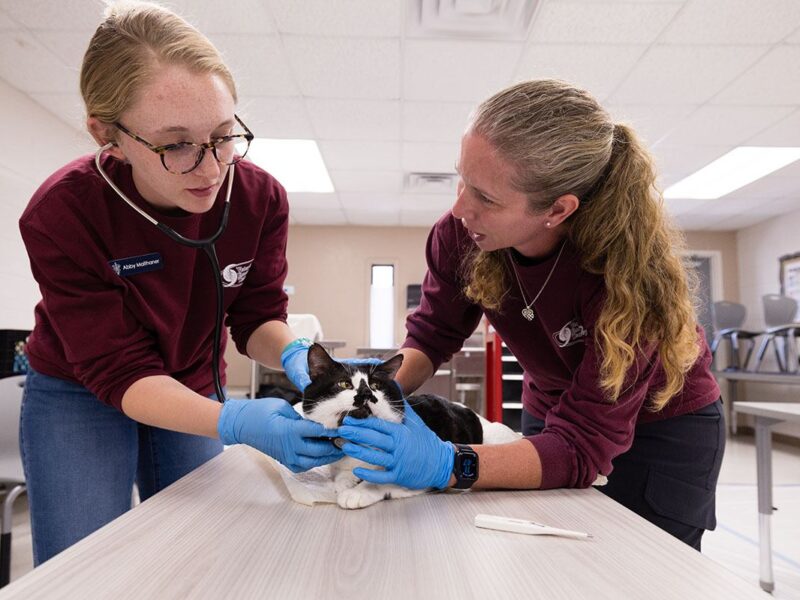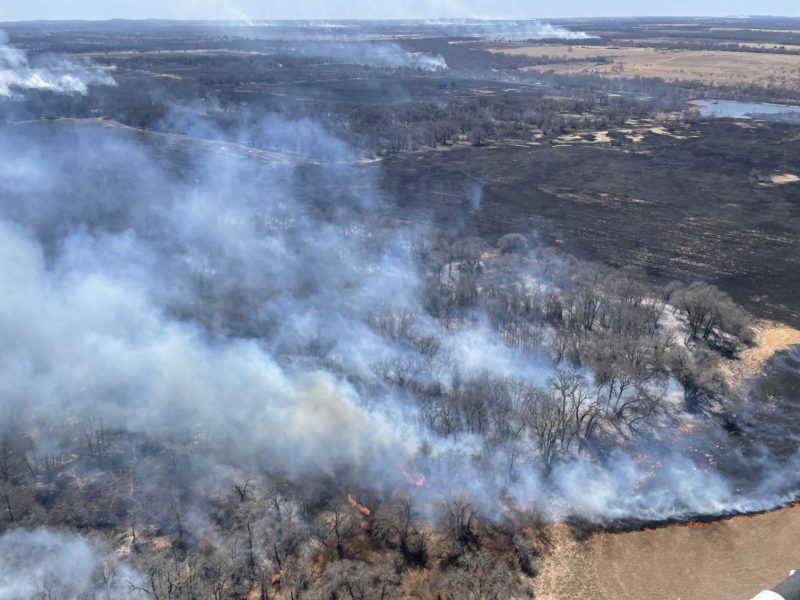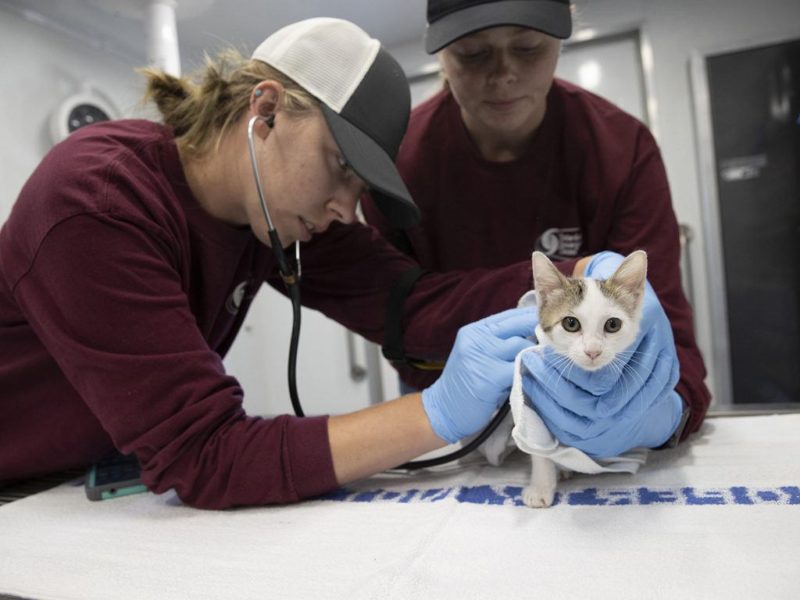Texas A&M Veterinary Emergency Team Treating More Than 500 Animals In California

On most deployments of the Texas A&M Veterinary Emergency Team (VET), the worst of the emergency situation has already passed and the role of the VET is to help with recovery efforts.
That was the situation in California as the team arrived in Butte County last weekend. Three emergency shelters had been set up, two for small animals and one for large animals, and the team arrived to help relieve the local staff, many of whom had been working 12-hour days for more than two weeks straight.
But the wildfires are an ongoing emergency situation, and the situation can rapidly change.
Shortly after returning to their base camp on Sunday night, the team received word that the fire had jumped, causing the evacuation of new areas and the need for a fourth animal shelter to be built the next morning.
“Disaster response requires sudden decision-making that is founded in preparatory planning,” said VET director Dr. Wesley Bissett. “There is an old military saying about a battle plan not lasting after the first shot. The key is that you have thought through the process. Butte County was able to rapidly identify a new shelter location because they were prepared. The Texas A&M VET was able to design and set up the shelter because we have so much experience in emergency planning.”
Logistics and administration aren’t the most exciting parts of emergency response, but they are crucial roles the VET is playing in California.
“The people of Butte County are wonderful and we will forever consider them family,” Bissett said. “They have been working so hard for so long that it is rewarding to be able to come in, provide them consistency in management, and give them a break.”
More than 500 animals — including dogs, cats, pigs, horses, chickens, sheep, goats, llamas, rabbits and birds — are being cared for across the four locations. Some animals are in the shelters because the owners evacuated and can’t take them, while others were found by search and rescue teams.
“The VET members are providing excellent veterinary medical care in the shelters,” Bissett said. “The reality is that you have to take care of injuries caused by the incident but then also provide preventive and therapeutic care for illnesses that can develop in an emergency shelter situation.”
The team is expecting to remain in California for several more weeks.
Media contact: Aubrey Bloom, 979-862-2489, abloom@tamu.edu





